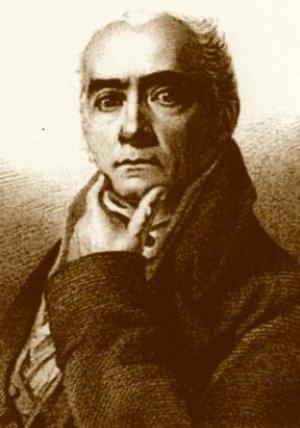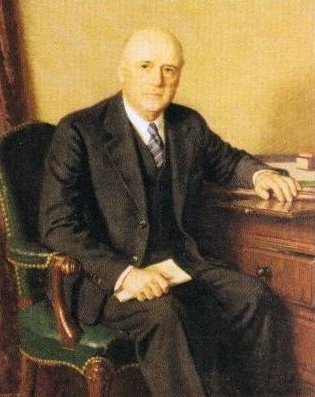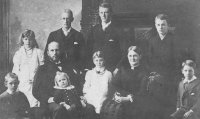|
 There are many spelling variations
of the surname Ryburn, including Ryeburn, Ryburne, Reyburn, Rayburn,
Reburn, Riburn, Raburn, Raeburn, Reaburn and more. So, how many of these
variations are related to people with what I consider the "proper
spelling", RYBURN, which originated in Ayrshire in early Medieval times?
Well, the situation is complicated. Some are and some aren't.
Let's hope the Ryburn DNA Project will eventually sort some of
this out. There are many spelling variations
of the surname Ryburn, including Ryeburn, Ryburne, Reyburn, Rayburn,
Reburn, Riburn, Raburn, Raeburn, Reaburn and more. So, how many of these
variations are related to people with what I consider the "proper
spelling", RYBURN, which originated in Ayrshire in early Medieval times?
Well, the situation is complicated. Some are and some aren't.
Let's hope the Ryburn DNA Project will eventually sort some of
this out.
When you look at the material on the Web regarding the Ryburn surname,
much of it it blithely assumes that the relatively common surname 'Raeburn'
is related to Ryburn. The most prominent
Raeburn was undoubtedly Sir Heny Raeburn, the famous Scottish portrait
painter of the 18th and 19th Century. And yet, his ancestors are reputed to
have come from near the Scottish-English border (see http://en.wikisource.org/wiki/Raeburn,_Henry_(DNB00)), not far from the
infamous Gretna Green. If you go into www.streetmap.co.uk, and
type in Raeburn as a search term, you will find a Raeburn
property
and a 'Rae Burn' just north of Gretna Green. This is likely to be
where Henry's ancestors came from. There is also a Raeburn Farm
and 'Rae Burn' in Cumbria, 18km to the east. (Interestingly, the Bewcastle Cross, with its "Ryeburn Cemeterium" inscription in Anglo-Saxon runes, lies just 14km further east.) However, Henry was
most probably unrelated to the Ayrshire Ryburns. As was the
custom of the time, the
Raeburns took their name from their land and the Rae Burn.
A 'Rae', or Roebuck, was a type of small deer. Sir Henry Raeburn
On the other hand, some Raeburns were just
misspellings of the original Ryburn name. The local parish minister may have been familliar with the surname 'Raeburn' and just assumed their illiterate Ryburn parishoners did not know how
to spell their own surnames. From then on it was recorded in the parish
register for all to see. The 'Johne Ryburne' (Laird of Ryburn) who was murdered in 1571 was in another reference called 'John Raeburn of that ilk'.
In 1667, John Ryburn and Janet Picken of Kilmarnock, Ayrshire,
were called "John Rayburne" and "Janet Pucken" on one birth record of
their daughter Marrion. Alexander Ryburn, a brother of James
Ryburn my great-great grandfather in Kintyre, became Alexander
'Raeburn'
on the birth records of most of his children born in Killarrow,
on the
Isle of Islay. The children of John 'Reyburn', who married Agnes
Stewart in 1818, in Stewarton, Ayrshire, were variously entered in the
records as 'Reyburn', 'Rayburn' and 'Ryburn', but they all reverted to
'Ryburn' after emigrating to Illinois, America. Consistent
spelling was not a high priority in Ayrshire, and I'm fairly sure most
Ayrshire 'Reyburns' and some 'Raeburns' were originally Ryburns.
The Ryburns of Ryburn Manor, near Dunlop, were landed
 gentry
and probably quite literate, so the spelling of their name remained
uncontaminated amongst their descendants, including most
Kintyre
Ryburns and their adventurous, pioneering descendants. The
spelling was 'Ryburn' in most, but not all, Kintyre records.
Perhaps an exception was Thomas Ryburn, a Campbeltown
"scavenger". According to the
1881 Scottish census he was born in Belfast in 1828. He may
have been born
Thomas 'Reyburn' or 'Reburn', but in Kintyre they were all Ryburns so
he probably felt the need to conform. gentry
and probably quite literate, so the spelling of their name remained
uncontaminated amongst their descendants, including most
Kintyre
Ryburns and their adventurous, pioneering descendants. The
spelling was 'Ryburn' in most, but not all, Kintyre records.
Perhaps an exception was Thomas Ryburn, a Campbeltown
"scavenger". According to the
1881 Scottish census he was born in Belfast in 1828. He may
have been born
Thomas 'Reyburn' or 'Reburn', but in Kintyre they were all Ryburns so
he probably felt the need to conform.
There were many Reburns,
Reyburns, Reaburns, Raeburns and Rayburns in Ireland in the 18th and
19th
century, the majority in County Monaghan and later in County Cavan.
Some of these (especially 'Reyburns') could conceivably be descended from early Irish
Ryburns, but nearly all these surnames had precedents in Scotland.
Many eventually found their way to
Canada and the USA. Most famous was Sam Rayburn, incorruptible
Democratic politician from Texas and outstanding Speaker of the US
House of Representatives from 1940 to 1961. We now know that
a John Ryburn probably fled to
Ireland for an unknown period between 1603 and 1629. He may have
joined one of the Ulster plantation schemes there, and he may also
have left some offspring in Ireland. However, none of the
the Raeburns, Rayburns, etc. in the R165 DNA Project Samuel Taliaferro Rayburn, 1941
are
genetically close to the four Ryburns who have so (Courtesy Wikipedia)
far contributed DNA, so close connections seem unlikely.
The four Ryburns tested form a discrete group, quite
apart from the other participants.
The unexpected 3:1 strength of the Irish matches in the Recent Ancestral Origins results
from the four Y-DNA tests done so far
suggests another intriguing possibility -- the name Ryburn may
have come from Ireland over 1000 years ago. In other words,
the early Ayshire Ryburns originally came from Ireland.
Although this Web site is mainly about Ryburns spelt in the ancestral
Ayrshire
way (including 'Ryeburn', 'Ryburne' and 'Ryeburne'), I am happy to
entertain other variations if they can be shown to be related to the
Ryburns proper, or the context suggests a relationship may exist.
However, not all Ryburns
may have originated from Ayrshire. The 'William de Ryeburne'
mentioned in 1251 probably came from the valley of
the River Rye ('Ryevale'), in North Yorkshire, and I am not sure that the John Ryburn who was
persecuted by the Bishop of Lincoln in 1530 was descended from the Ayrshire Ryburns, although he
may have been. On Blaeu's 1654 map of the Dunlop area of Ayrshire (see the Ayrshire page),
the Ryburn property is spelt "Rÿburn" with an umlaut over the "y".
Presumably this is an indication of the way Ryburn was pronounced
at the time, but I am unsure of its precise meaning. Ryburn may
have been pronounced as "Reeburn" in Scotland in the past, accounting for spelling variations such as "Reburn" and
"Reyburn" and "Reaburn".
Last updated 19 August, 2014
|
